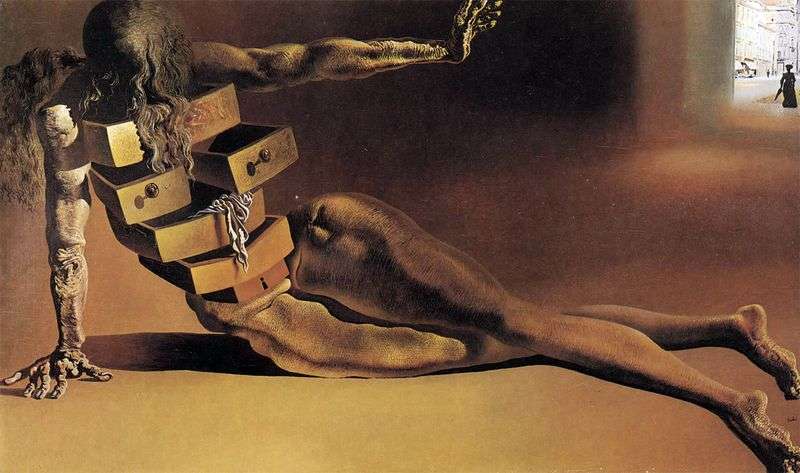
The semi-dark gate is illuminated by the rays that make their way outside, from the street. There, in the archway, you can see high city houses, the church of Gothic architecture. People are walking along the street. This is a random passers-by: a lady in a hat with an umbrella, a child, a couple more figures. In the foreground of the picture is a half-lying person. His hair is collected in a “tail” hairdo; a long bangs covering his face.
Judging by the proportions of the body, this is most likely a man. The man’s torso is like a chest of drawers: it consists of a set of drawers. All the boxes are open. They are empty, only a single flap of crumpled cloth hangs from one. The man’s posture is very expressive, it clearly shows suffering. He was robbed and thrown here, in this gateway.
One of his hands is stretched in the direction of the street and passers-by in a gesture of rejection. Man tries to protect himself from the possible curiosity of others. He is naked, he is defeated, he is in despair. The word “emptiness” describes the impression of the picture as best as possible.
Drawers – a common motive in the work of Dali. As a rule, they symbolize hidden desires. Here all the boxes are open, there is nothing in them. You do not need to be an art critic or connoisseur of symbols to interpret this picture. Before us is a man in a moment of despair and complete devastation.
The dark lonely corner in which he tries to hide from the outside world – his unreliable refuge – is unlikely to provide him peace and relief from suffering, is unlikely to shield him from the idle interest of others. Other people’s hands hungrily toward the unlocked boxes. The contents of the locker became a public good.
 Anthropomorphic bread by Salvador Dali
Anthropomorphic bread by Salvador Dali Dali, turning his back, writes a portrait of Gala by Salvador Dali
Dali, turning his back, writes a portrait of Gala by Salvador Dali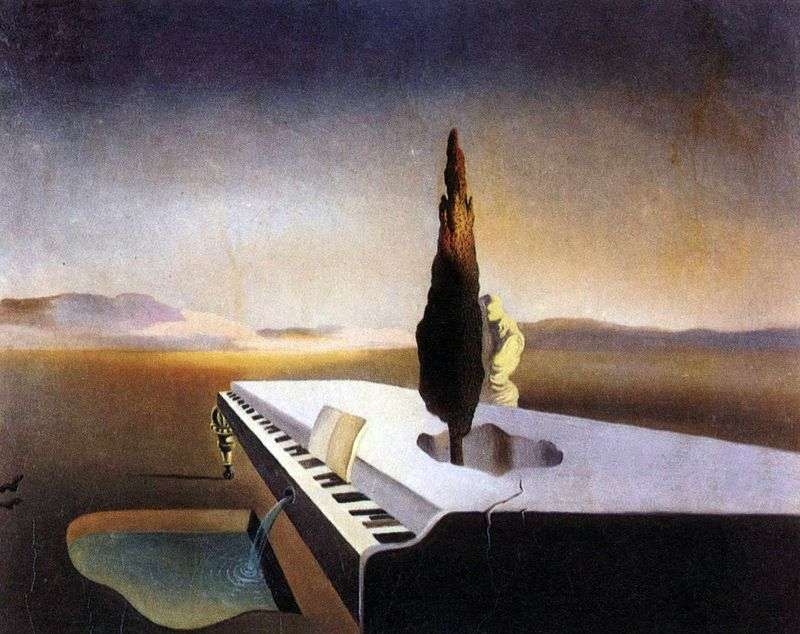 Necrophilic source, scoring from the piano on the code by Salvador Dali
Necrophilic source, scoring from the piano on the code by Salvador Dali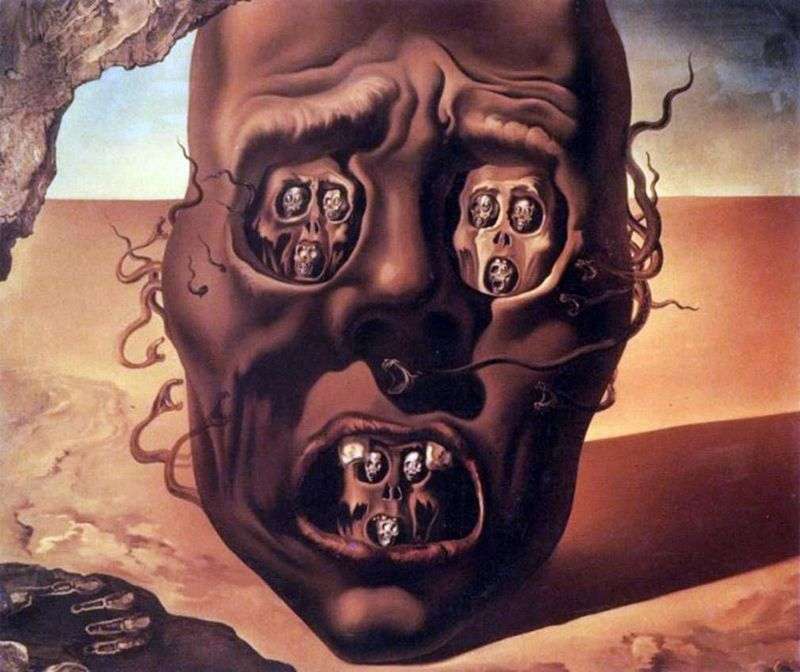 The face of the war by Salvador Dali
The face of the war by Salvador Dali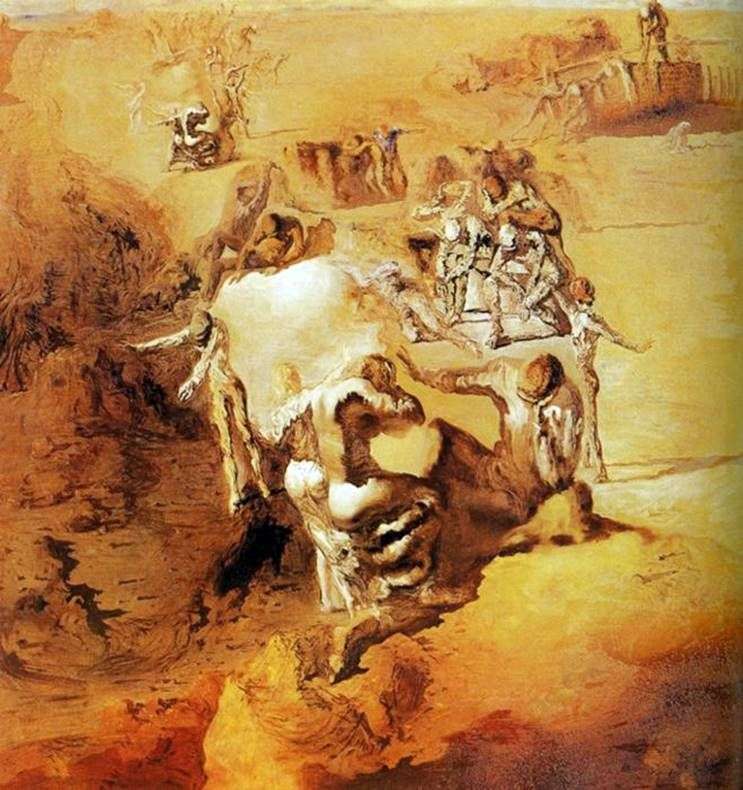 Big Paranoid by Salvador Dali
Big Paranoid by Salvador Dali Giraffe in the fire by Salvador Dali
Giraffe in the fire by Salvador Dali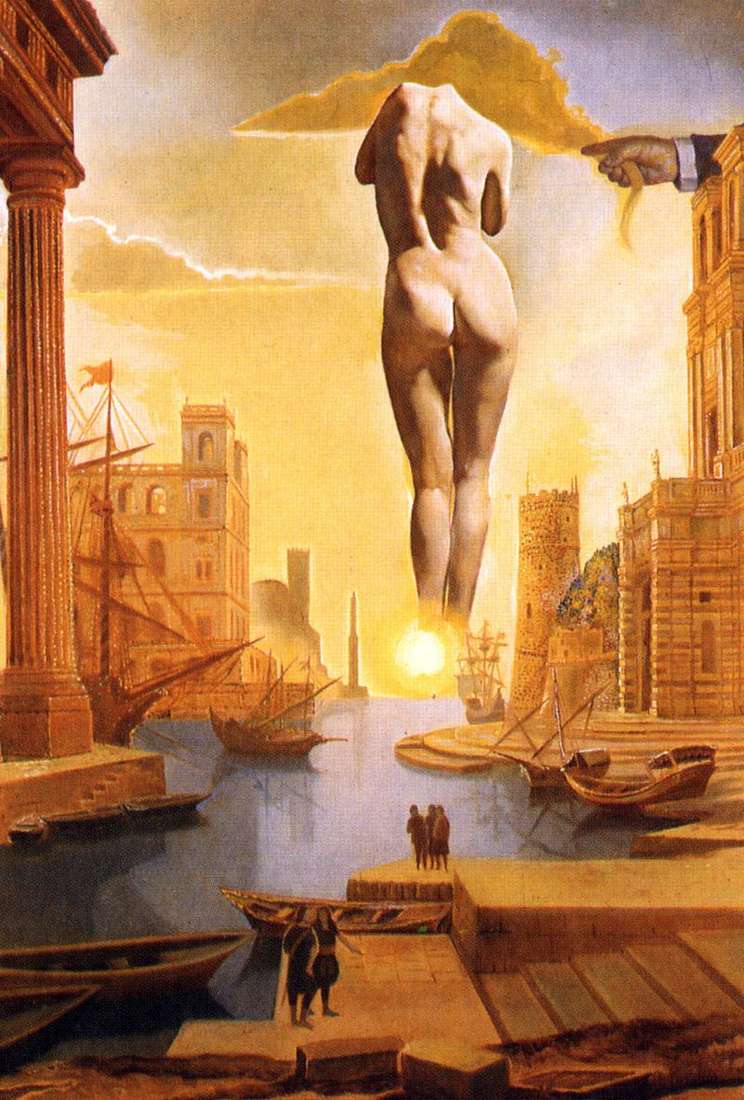 Dali’s hand steals the golden fleece to show the Gala-Dawn by Salvador Dali
Dali’s hand steals the golden fleece to show the Gala-Dawn by Salvador Dali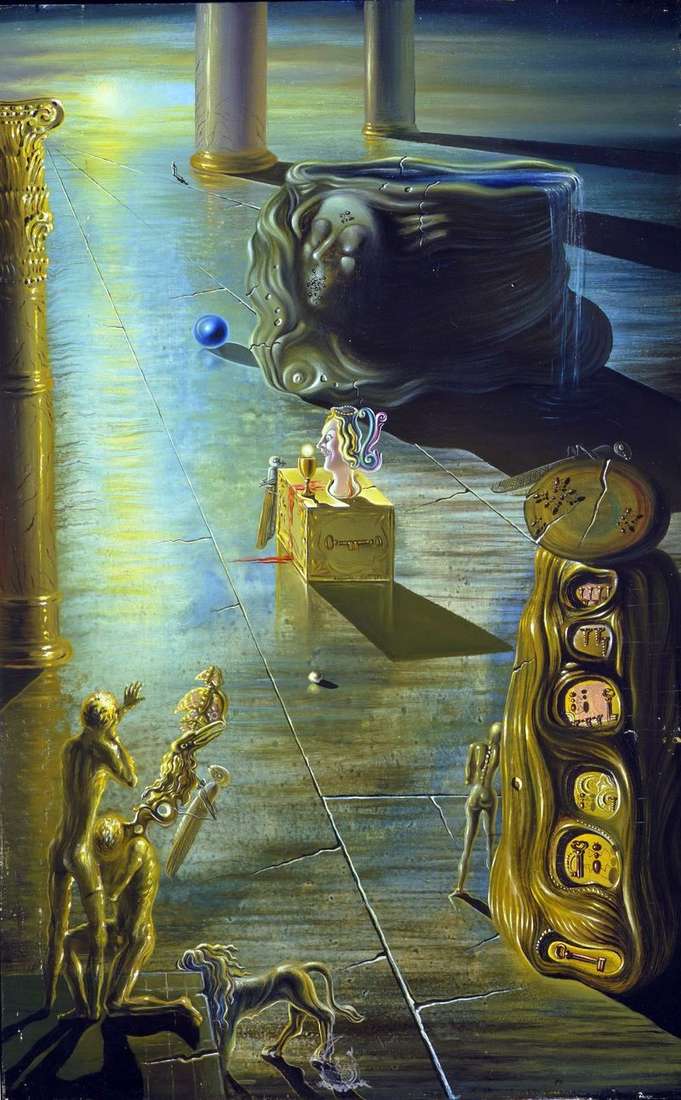 Fountain by Salvador Dali
Fountain by Salvador Dali